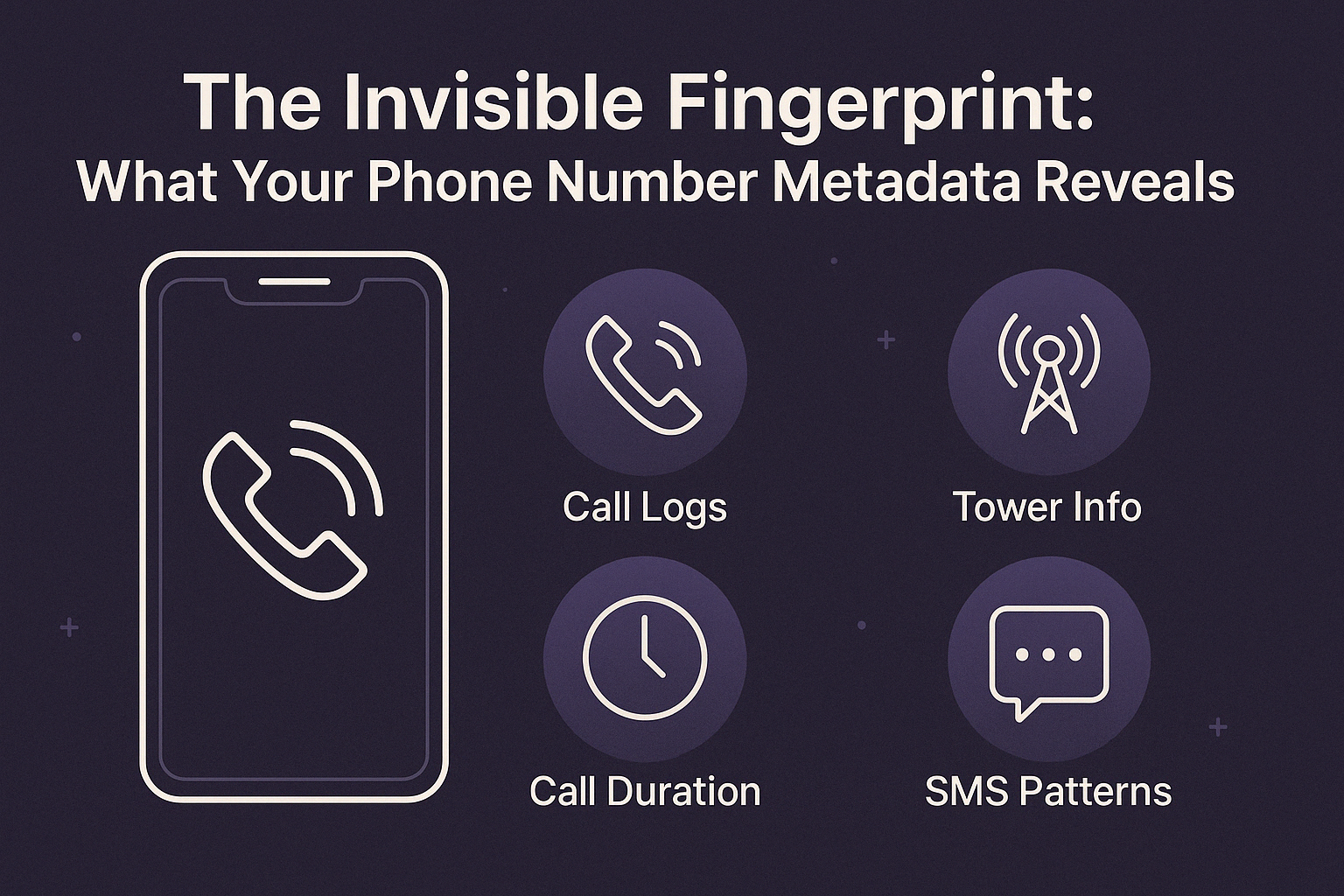Privacy & Security
The Invisible Fingerprint: What Your Phone Number Metadata Reveals
How your call and SMS metadata maps your routines, relationships, and movements—and practical steps to obfuscate your digital footprint.

What Is Phone Metadata?
Phone metadata is information about your communications—who you called or texted, when, for how long, and where. It includes call detail records (CDRs), SMS/MMS logs, cell tower IDs, timestamps, and frequency patterns, creating an "invisible fingerprint" of your behavior.
- CDRs: Numbers dialed, timestamps, call duration.
- SMS/MMS Logs: Sender/receiver, timestamps, message counts.
- Cell Tower Info: Tower IDs mapping your approximate location.
- Temporal Patterns: Daily routines and contact frequency.
- Social Graph: Relationship strength from call/text volumes.
How It’s Analyzed
Law Enforcement
Agencies build social graphs, infer behaviors (e.g., patterns indicating medical visits), track movements via cell towers, and identify burner phones by matching contact patterns.
Marketers & Data Brokers
Marketers use call tracking analytics for ad performance, append metadata to consumer profiles, and trade location data for geo-targeted ads.
Obfuscating Your Metadata
Compartmentalize your communications via burner phones, VoIP apps, and rotating numbers. Services like ChatOdyssey Relay offer encrypted call/text relay plus unlimited email relay—free trial, then $4.99/month—to mask your primary number.
- Physical prepaid “burner” phones.
- VoIP secondary lines (Burner, Hushed, ChatOdyssey Relay).
- Rotate or silo numbers by context.
- Use *67 to block caller ID on a per-call basis.
When a Second Number Doesn’t Guarantee Privacy
Metadata continuity, co-location of devices, IMSI/IMEI cross-linking, and accidental overlap of identities can still reveal you across numbers. Strict operational security is essential.
Service Comparison
| Service | Cost | Features | Privacy | Link |
|---|---|---|---|---|
| ChatOdyssey Relay | Free trial; $4.99/mo | Encrypted call/text relay, unlimited email relay | Very High (E2EE) | Get Relay |
| Google Voice | Free | Voicemail transcription, forwarding | Moderate | Google Voice |
| Burner | $4.99/mo after trial | Disposable lines, auto‑reply | High | Burner |
| Hushed | $4.99/mo | Disposable/international numbers, E2EE chat | Very High | Hushed |
Conclusion
Phone metadata serves as a powerful tracker of your life. While multiple numbers and masking services can fragment your fingerprint, achieving true anonymity demands disciplined separation of personas. Treat metadata with care—encrypt, compartmentalize, and stay vigilant to maintain your privacy.
Frequently Asked Questions
What details are included in phone metadata?
Phone metadata includes call logs, SMS/MMS records, timestamps, call durations, cell tower locations, and frequency patterns.
How do law enforcement agencies use metadata?
They build social graphs, track location trails via cell towers, infer behaviors, and match patterns of burner phones.
Can marketers exploit phone metadata?
Yes, marketers analyze call analytics, append metadata to consumer profiles, and purchase location data for targeted ads.
How can I obfuscate my metadata patterns?
Use burner phones, VoIP apps like ChatOdyssey Relay, rotate numbers by context, and maintain strict separation of contacts.
Why might a second number not protect privacy?
Metadata continuity, co-location of devices, and cross-linking via device IDs can reveal the same user across different numbers.